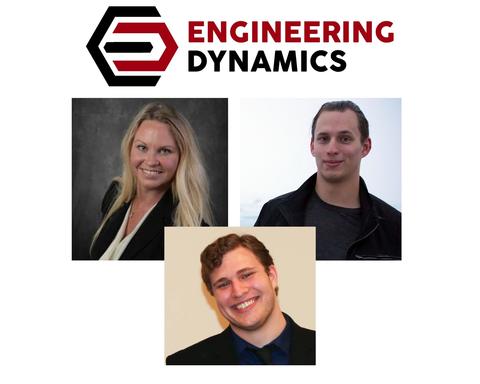ENGR Dynamics

Innovation Award Winner
Total value of prizes received through the mFIT Challenge: $12,500
Phase 1: $8,500
Phase 2: $4,000 Innovation Award
About the team
The ENGR Dynamics team combines a unique set of skills and experiences, which are well-suited to solving a technical problem of such critical importance. The team blends the complementary aspects of systems engineering and computer science to thoroughly understand the overall goals of the product, along with the constraints and complexities faced over the product's lifespan. System development utilizes both time-tested concepts (such as designing for sustainability) and a technologically advanced toolset to explore alternatives and create a mature product.
Key team members
Dave Kaniss, Systems Engineer
Dave is a senior systems engineer specializing in seamless integration and long-term sustainability. He has over 12 years of engineering experience, spanning the entire development lifecycle of complex systems-of-systems. Dave is well versed and demonstrated in providing safe, cost-effective, reliable, and highly usable products. He's passionate about photography and brings roughly 8 years of image capturing/editing experience to this challenge.
Tim Kaniss, Computer Scientist
Tim is a computer scientist with 7 years of experience in C/C++ programming, focused on modeling and simulation, embedded systems programming, and digital signal processing. He has extensive experience with sensor integration and real-time data processing. Previous computer vision projects include digitizing hand-drawn performance charts and correcting photographic distortion, developing augmented reality applications with hand pose estimation, and estimating human motion in extended videos.
The solution
This solution targets the technology gaps of accurately measuring distance, rending algorithm efficiency, and accessing available sensors. The team improved distance measurement through the use of laser time-of-flight sensors and stereo depth vision, allowing contactless fingerprint capture to be accurately and automatically resized to the target resolution, minimizing scaling errors. Stereo video streams are accessed via the relatively new Android Multi-Camera API, which supports portable third-party access to camera configurations using multiple physical cameras. Optical image stabilization eliminates small motions affecting the capture device, reducing image blur from using a handheld device. Dedicated sensor-processing hardware allows for efficient video processing and rendering of two high-resolution camera streams, supporting self-contained mobile processing.
Key highlights
- Incorporates the laser time-of-flight sensor to measure the distance to the finger.
- Stereo video streams are accessed via the relatively new Android Multi-Camera API.
- Optical image stabilization eliminates small motions affecting the capture device.
- Dedicated sensor-processing hardware allows for efficient video processing and rendering of two high-resolution camera streams, supporting self-contained mobile processing.

